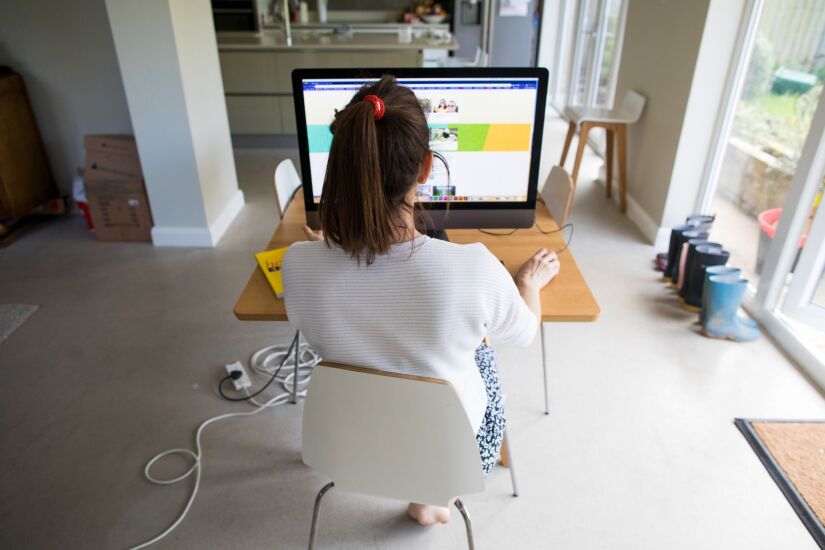Enjoy complimentary access to top ideas and insights — selected by our editors.
Five years have passed since the start of the COVID-19 pandemic, which introduced workers and employers everywhere to the idea of remote work — and how successful it can be. Now, as corporations across industries are increasingly demanding a return-to-office, savvy employers (and stubborn employees) are doubling down on remote work, providing or demanding flexibility.
WalletHub recently ranked all 50 states and the District of Columbia to determine where employees have the best conditions when working from home, based on work and living environment factors including internet cost, cybersecurity and home size. Each of the 12 factors received a weighted score to determine a total score and ranking.
"Working from home can save people a lot of money on transportation expenses, as well as make their work environment a lot more comfortable and their hours more flexible," said Chip Lupo, WalletHub analyst, in a release. "However, things like energy costs, internet speed, home sizes and how many people live together can greatly impact people's savings and productivity. While work-from-home jobs can be done anywhere, certain states make the practice much better than others."
Read more: Are employers making a costly mistake by nixing remote work?
Delaware ranks as the top state for working from home, with more than 13% of the workforce currently working remotely. The state also tied for third for lowest internet cost and residents have more access to high-speed internet. Additionally, Delaware ranks fifth for largest homes.
Other top states for remote work include Utah and Maryland. Utah has the lowest average retail price of electricity, as well as the largest homes in the country. Maryland has low internet costs, as well as larger houses.
The worst state for working remotely is Alaska, which has a low percentage of potential remote workers and ranks last for work environment.
Other states at the bottom of the list include Montana and Wyoming. Montana has the highest internet costs, as well as a lack of internet access. Wyoming also has higher internet costs.
"Available research on employee output from office- versus home-based settings suggests that worker productivity isn't much different between the two systems," said Adam M. Lippert, Ph.D., associate professor and director of graduate studies, department of sociology, at the University of Colorado, Denver. "Employers looking to gain a competitive edge in attracting a talented labor supply would do well to consider work-from-home, hybrid, and 'flexspace' arrangements where possible."
Read more about the best and worst states for working remotely.
Worst states for working remotely
| Rank | State | Total score | Work environment rank | Living environment rank |
| 10 | Maine | 46.63 | 30 | 50 |
| 9 | Oklahoma | 46.59 | 45 | 29 |
| 8 | Iowa | 46.4 | 35 | 46 |
| 7 | Mississippi | 45.63 | 48 | 24 |
| 6 | South Dakota | 45.13 | 44 | 39 |
| 5 | West Virginia | 44.72 | 40 | 45 |
| 4 | Arkansas | 42.99 | 46 | 42 |
| 3 | Wyoming | 42.01 | 47 | 40 |
| 2 | Montana | 33.23 | 50 | 47 |
| 1 | Alaska | 30.98 | 51 | 49 |
Best states for working remotely
| Rank | State | Total score | Work environment rank | Living environment rank |
| 10 | New Hampshire | 60.09 | 9 | 20 |
| 9 | Washington | 61.81 | 10 | 7 |
| 8 | Massachusetts | 62.3 | 4 | 30 |
| 7 | Pennsylvania | 62.63 | 6 | 13 |
| 6 | Connecticut | 63.44 | 7 | 6 |
| 5 | New Jersey | 64.79 | 2 | 18 |
| 4 | District of Columbia | 66.36 | 1 | 51 |
| 3 | Maryland | 66.51 | 3 | 5 |
| 2 | Utah | 67.02 | 11 | 1 |
| 1 | Delaware | 67.32 | 5 | 3 |


























